These images were taken on the Amazon, when Ed and Cho were crossing the river for the first time in Jenny, the borrowed canoe, and later in Marudá, on the coast, at the end of their marathon. The story is covered in Chapter 7 of The Lean Years.
- Ed in Vila Careiro
- Preparing Jenny the Canoe
- Cutting the line
- Approaching the Atlantic
- At the Finish
 In chapter one of the Lean Years, we head to the little town of Iranduba, on the Solimões River. An excellent lunch is spent watching the local kids trying to wash our host’s horse. It might not look like fun, but in the heat of the noon-day sun, there are worse places to be than up to your armpits in water.
In chapter one of the Lean Years, we head to the little town of Iranduba, on the Solimões River. An excellent lunch is spent watching the local kids trying to wash our host’s horse. It might not look like fun, but in the heat of the noon-day sun, there are worse places to be than up to your armpits in water.
A year or two later, all the land that can be seen in the picture was washed away, and the area was eventually abandoned.
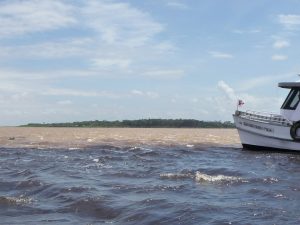 From chapter two, here is a picture taken at the famous Meeting of the Waters, or Encontro das Águas.
From chapter two, here is a picture taken at the famous Meeting of the Waters, or Encontro das Águas.
The Negro River (foreground) is staggeringly large, but it’s just another tributary as far as the mighty Amazon is concerned.
This picture is taken from the north (Negro) side, looking towards the Ilha do Careiro in the distance. The south banks of the Amazon are another six kilometres beyond the land that can be seen.
At the line, the depth is approximately 50 – 60 metres, depending on the time of year.
On my first trip to Lago do Piranha, I was fortunate enough to experience some fantastic conditions on the Solimões River that enabled me to set my all-time fastest speed in the Shamrock. Sadly, at the end of the trip, I had to be towed back to base by my friend Charlie. Oh the ignominy…
- Shamrock at speed on the way to Lago Piranha…
- …and towed back 2 days later.
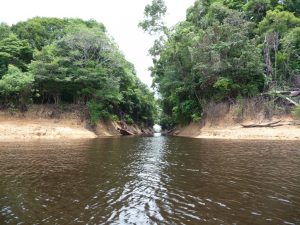 With Mark Trigg on the Lost Channels expedition (Chapter 5), we passed hundreds of channels. None was quite like this one, however, taken at low water on the Rio Negro. The water rises to well above the level of the banks that can be seen, and the total potential rise and fall of the river can be as much as 18 metres. A lot of water.
With Mark Trigg on the Lost Channels expedition (Chapter 5), we passed hundreds of channels. None was quite like this one, however, taken at low water on the Rio Negro. The water rises to well above the level of the banks that can be seen, and the total potential rise and fall of the river can be as much as 18 metres. A lot of water.
The photographs below are from the section of river between Manaus and Novo Airão (chapter 6, The Lean Years). I prefer the black water as it offers more opportunity to stop and savour the pristine rainforest environment. It can be particularly peaceful in the morning, and because the water is very acidic, there are few mosquitoes.
- Early morning mist
- Annavilhanas Islands
- Break out the eggs…
- Rocks on the Rio Negro
These final shots are of various places around Manaus, including Careiro Castanho (Chapter 4), a tree near our house (and the very sloth that mauled me in the same chapter), the Port of Manaus and Lago do Piranha (chapter 3). As and when I get some more decent shots, I’ll post them up.
- The very sloth….
- A typical house in the várzea
- Boats at Manaus
- A typical blockage

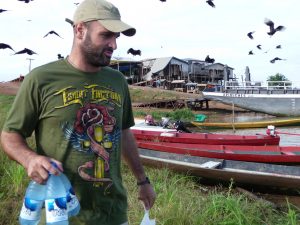
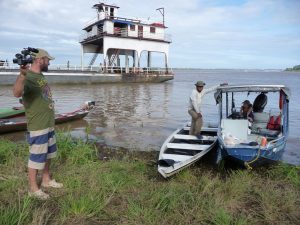
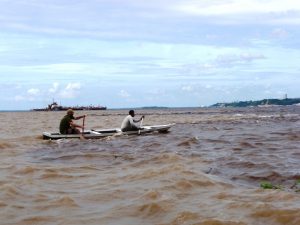
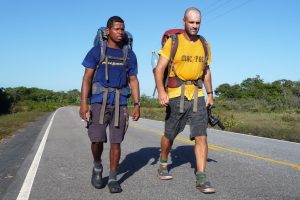

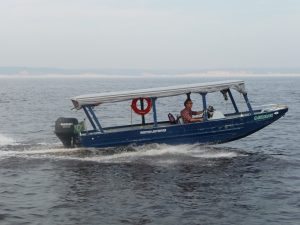
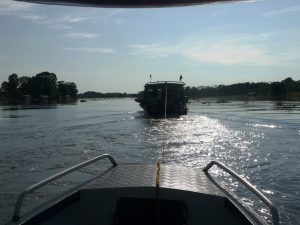

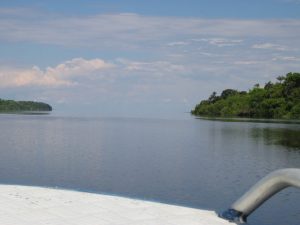
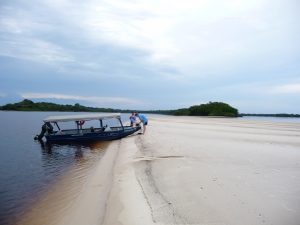
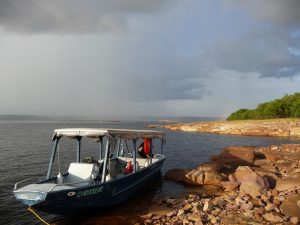
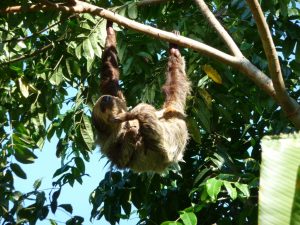

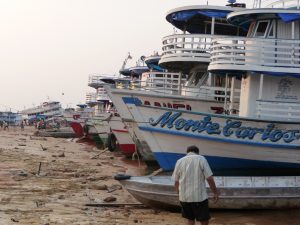
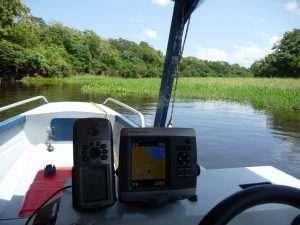
Recent Comments